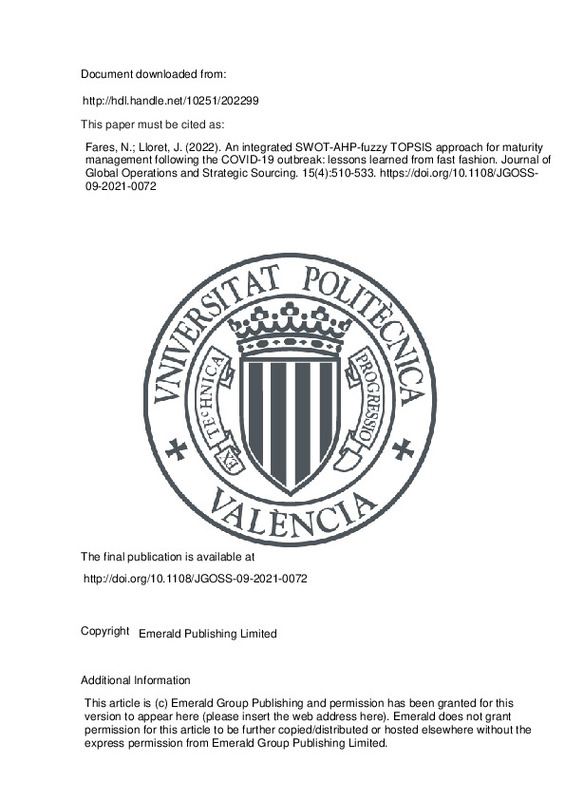JavaScript is disabled for your browser. Some features of this site may not work without it.
Buscar en RiuNet
Listar
Mi cuenta
Estadísticas
Ayuda RiuNet
Admin. UPV
An integrated SWOT-AHP-fuzzy TOPSIS approach for maturity management following the COVID-19 outbreak: lessons learned from fast fashion
Mostrar el registro completo del ítem
Fares, N.; Lloret, J. (2022). An integrated SWOT-AHP-fuzzy TOPSIS approach for maturity management following the COVID-19 outbreak: lessons learned from fast fashion. Journal of Global Operations and Strategic Sourcing. 15(4):510-533. https://doi.org/10.1108/JGOSS-09-2021-0072
Por favor, use este identificador para citar o enlazar este ítem: http://hdl.handle.net/10251/202299
Ficheros en el ítem
Metadatos del ítem
| Título: | An integrated SWOT-AHP-fuzzy TOPSIS approach for maturity management following the COVID-19 outbreak: lessons learned from fast fashion | |
| Autor: | Fares, Naila | |
| Entidad UPV: |
|
|
| Fecha difusión: |
|
|
| Resumen: |
[EN] Purpose:
Focussing on issues that have impacted textiles, clothing and fast fashion following the COVID-19 outbreak, this study aims to identify agility factors pertinent to retail maturity management, mainly on ...[+]
|
|
| Palabras clave: |
|
|
| Derechos de uso: | Reconocimiento - No comercial (by-nc) | |
| Fuente: |
|
|
| DOI: |
|
|
| Editorial: |
|
|
| Versión del editor: | http://doi.org/10.1108/JGOSS-09-2021-0072 | |
| Descripción: |
|
|
| Tipo: |
|







![[Cerrado]](/themes/UPV/images/candado.png)


